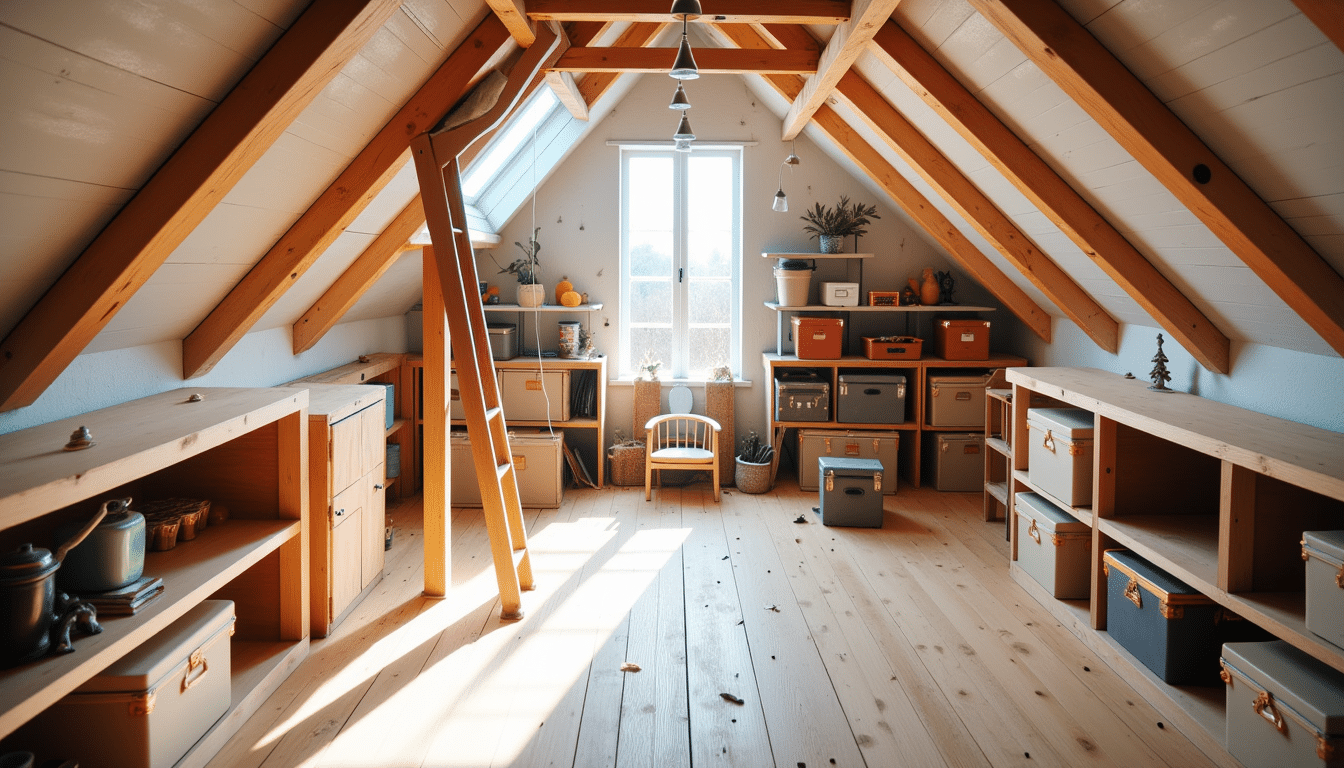For many homeowners, the loft sits above us as an underused afterthought – out of sight, out of mind. But with a bit of planning and some careful design thinking, it can be transformed into a practical, efficient storage area that solves more problems than you might expect. That’s what the author of How I Transformed My Loft into a Brilliant Storage Space discovered, and it’s a project I strongly support for anyone ready to reclaim their home’s hidden potential.
Let’s walk through the real nuts and bolts of doing it properly – avoiding common pitfalls, and making design choices that last.
Start with structure before style
First (and this can’t be overstated), you need to understand your loft’s bones. This includes the joists, the roof trusses, the wall types – even where your insulation has been placed. Too often I see folks leap into loft boarding or even full conversions without knowing which timbers can take the weight, or how their insulation choices might affect ventilation.
Get up there, torch in hand, and make some detailed notes. Measure the usable head height and the shape of the roof pitch. Watch out for low-clearance eaves – these tight corners are often written off, but they’re goldmines for lateral storage when used creatively.
Don’t assume every loft is equal, either. What worked in a semi-detached from the ’60s won’t translate directly to a new build or an older terrace. Every property has quirks – successful storage solutions start with respecting them.
Board like you mean it
Before any shelf or box goes into that space, you need a safe, stable floor. Boarding the loft is a fundamental step, but it’s not just about slapping down some MDF.
Start by checking your joist spacing and weight-bearing limits. Consider insulated loft boarding systems – they add a layer of thermal protection, meaning your loft isn’t working against your house’s energy efficiency. In the Cumbrian climate, where winters are long and damp, this is more than a nicety – it’s an energy bill saver.
Loft stilts are another underrated hero here. If your insulation is deeper than your joists, stilts let you raise the boarding without squashing the insulation down, which would kill its thermal performance. Not using stilts, or compressing your insulation ‘just a bit’ to lay boards flat, is a classic DIY error – and one I’ve seen lead to damp issues and poor heat retention across more than a few underprepared homes.
Shape your storage to suit your space
One of the smartest moves I saw in The Carpenter’s Daughter’s approach was using the roof trusses as support for custom shelving. In traditional loft designs, trusses can feel like in-the-way supports, but with a bit of clever carpentry and a few offcuts, they can be transformed into structural allies.
Cut shelves to fit snugly in between the truss bays or battens. Push them as far back as you safely can – why waste rare floor space when the volume above your head is empty? Add a small lip along the rear edge of each shelf. This simple touch stops boxes or tools slipping off the back and disappearing into insulation where they’re near-impossible to retrieve.
If you want even more space, fixed shelving on bare brick or blockwork gable ends is rock solid and especially handy for heavier or less-used items. Just don’t add so much weight that you overlook access – storage’s no good if it stops you moving around up there.
Design for maintenance, not just for today
Before you call it finished, think of your boiler flue, wiring junctions, or water tank. If access is required in future, nothing kills your hard work faster than having to pull up perfectly good boards to reach a pipe.
Plan for reachable inspection hatches or paths around sensitive areas. And label what’s where, especially if you’re boxing in insulation or hiding elements behind shelving. You don’t want future-you (or the next homeowner) spending an hour trying to remember where the stopcock is in a loft maze of storage boxes.
Final takeaway
Transforming a loft into a smart storage area isn’t just about gaining space – it’s about doing so without risking energy efficiency, safety, or future flexibility. A good loft storage conversion is subtle, high-functioning, and tailored to the unique shape of your house.
So take the time to map your layout, use the right materials (stilts and insulated boards are worth every penny), and make design decisions that respect both the structure and the future upkeep of your home.
It’s not the sexiest room in the house – but done right, your loft might become its most useful.






